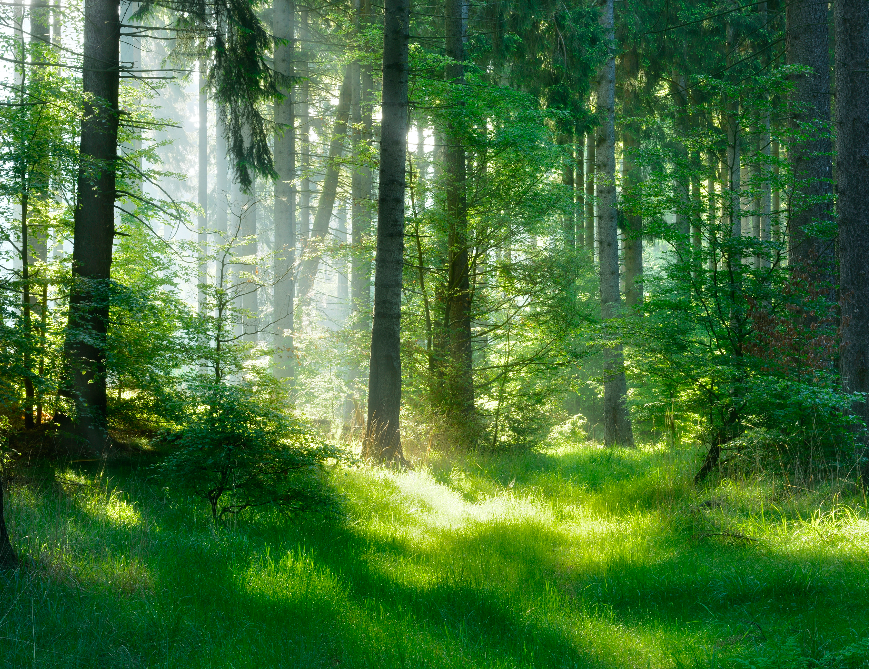In our Autumn 2021 issue, our resident gardening expert, Hans Wieland, took a look at the many health, social and environmental benefits of trees! Enjoy his words below.
ash
Hans Wieland wrote an enlightening article for our Winter 2017/18 issue on how to find little-known food ingredients in hedgerows and forests. Whether it’s hawthorn flour muffins or elderflower lemonade, you are bound to learn about something completely new in his article. We are sharing it here in its entirety. Perhaps it may inspire you to take a closer look at the everyday trees around you!

Culinary connections 5: Foraging for food from forests and hedgerows
By Hans Wieland and dedicated to the late Dick Warner
One of my all-time favourite memories is of walking along one of the hedgerows at The Organic Centre in September 2004 with the late Dick Warner, eating Hawthorn berries. Dick was then our ‘Environmentalist in Residence’ during the third Green Festival North West. With around twenty-five children from the local National School in tow, he was in his element, explaining the importance of our native hedges, pointing out the various species of trees and plants, telling the children stories about the wildlife that benefits from hedgerows and – probably most exiting for his young audience – encouraging them to nibble leaves, taste fruits; the odd wild raspberry or strawberry besides the many blackberries.
There is more to trees than fruit
Most of us know of, and greatly appreciate, the many wild and cultivated fruit, nuts and berries which come from trees. However, there are more edibles from trees than just fruit and few are aware of the incredible variety of other edible parts; bark, leaves, twigs, seeds, pollen, roots, new growth, flowers and of course sap.
If you are new to ‘eating trees’, here are a few guidelines:
Firstly, get to know your tree. Secondly, harvest in season i.e. young leaves and flowers in the spring, nuts and berries in the autumn. Thirdly, harvest only what you need.
Probably the easiest way to start eating trees, is to make them into salads; the young, tender leaves of beech, birch, hawthorn, and linden can be tossed into a salad, though some are better tasting than others. We make a stunning hawthorn beetroot salad at home.
Five trees to begin your journey with along the hedgerows and into the woods
The Hawthorn trees which Dick Warner so loved are found throughout the Irish countryside. I remember vividly the conversation Gaby and myself had in the end with the trees, so we could feel at ease cutting down a few in order to make way for our extension to the cottage. It wasn’t just that fairies live in hawthorn trees, it was the variety of food they can provide. Gaby makes a tincture from the flowering tops in spring, which is good for blood circulation. The young leaves can be eaten in salads. They are known as ‘bread and butter’ and were traditionally eaten by children on their way to school. Berries in the autumn make a great tea, can be eaten raw as a source of Vitamin C or even turned into hawthorn flour muffins – which is not that simple, I can assure you.
The Spruce, which got a bad name because of its sole use in many forestries, provides wonderful tips with a strong taste of pine and citrus, as does the Fir tree. An easy way to distinguish the two; needles from the Spruce sting whereas the ones from the Fir don’t! Tips are easy to gather as the trees are growing their new needles for the year. Those small, young, soft bits at the end of branches are fully edible and tender enough to just eat them on the spot. They are easily spotted with a lighter colour than the older, mature needles.
The Elder is another iconic tree in the Irish countryside. The immune enhancing properties of elderberries are renowned in Europe and the tree is a common feature around farmhouses. Herbal remedies can be derived from all parts of the plant: stem, flower, root and seed. We collect the flowers in spring for making Elderflower lemonade and, come October, spend hours in the evening around the kitchen table to clear the berries from the stems for making Elderberry rob – the ultimate Vitamin C remedy for the Winter month against coughs and colds.
The Birch, easily spotted because of the white bark, is one of the first trees in spring to produce new leaves and thereby marks the ‘new beginning’. In my native Germany it’s the tree for people in love and widely used for all sorts of shenanigans on the first of May. We harvest the sap from the tree in March with a special Birch tree tapping kit so as not to harm the tree. Young leaves are great in smoothies. The bark is used in oils helping with eczema and dandruff.
So finally to the Ash tree, the source of hurling sticks and freshly cut firewood. I publicly confess that until recently my connection to this great tree was through the above mentioned; supporting the Kilkenny hurlers and coppicing Ash for firewood. Inspired by a book on the culinary uses of trees, I came upon a recipe for Ash liqueur as an aphrodisiac and life prolonging elixir. Quite simply, ferment one to two handfuls of the pristine young Ash leaves in one litre of good semi-dry white wine for a week, strain and store cool. Drink as an aperitif or mix with sparkling water.
For recipes e-mail: hans@theorganiccentre.ie
theorganiccentre.ie


